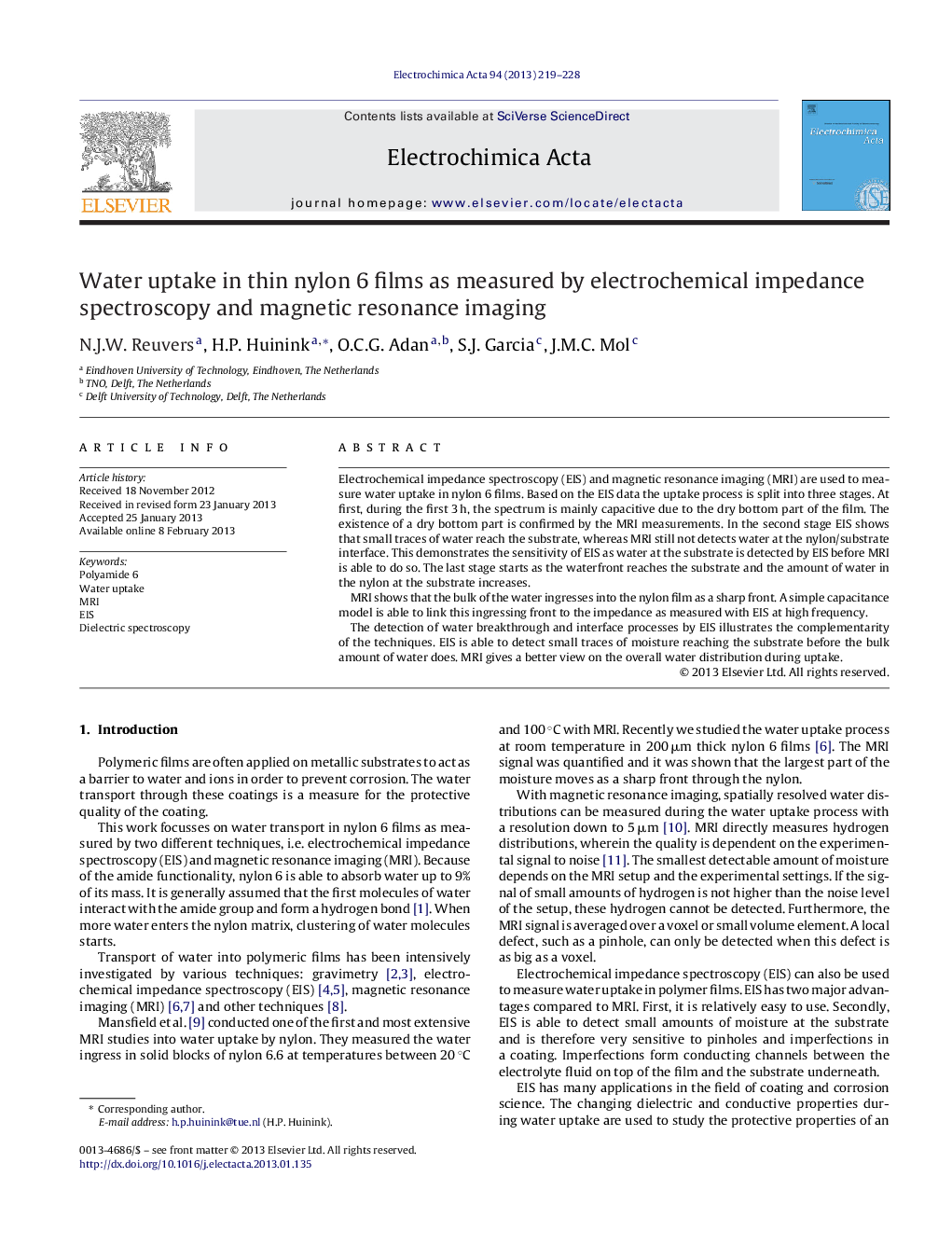| Article ID | Journal | Published Year | Pages | File Type |
|---|---|---|---|---|
| 187049 | Electrochimica Acta | 2013 | 10 Pages |
Electrochemical impedance spectroscopy (EIS) and magnetic resonance imaging (MRI) are used to measure water uptake in nylon 6 films. Based on the EIS data the uptake process is split into three stages. At first, during the first 3 h, the spectrum is mainly capacitive due to the dry bottom part of the film. The existence of a dry bottom part is confirmed by the MRI measurements. In the second stage EIS shows that small traces of water reach the substrate, whereas MRI still not detects water at the nylon/substrate interface. This demonstrates the sensitivity of EIS as water at the substrate is detected by EIS before MRI is able to do so. The last stage starts as the waterfront reaches the substrate and the amount of water in the nylon at the substrate increases.MRI shows that the bulk of the water ingresses into the nylon film as a sharp front. A simple capacitance model is able to link this ingressing front to the impedance as measured with EIS at high frequency.The detection of water breakthrough and interface processes by EIS illustrates the complementarity of the techniques. EIS is able to detect small traces of moisture reaching the substrate before the bulk amount of water does. MRI gives a better view on the overall water distribution during uptake.
Graphical abstractFigure optionsDownload full-size imageDownload as PowerPoint slide
